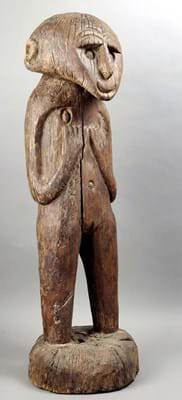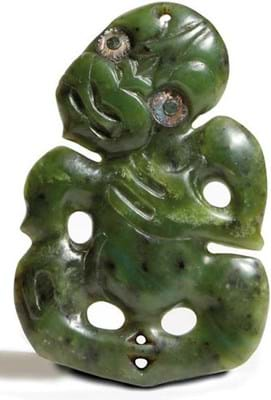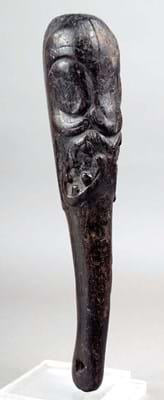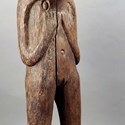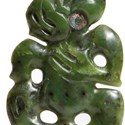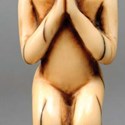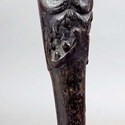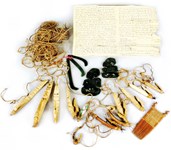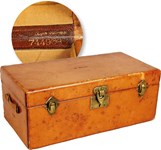The September 20 sale was led by a particularly good greenstone hei tiki from a private collection in the Netherlands. Possibly 18th century, relatively large at over 5in (13cm), inlaid with haliotis shell eyes and nicely worked with a tilted head and forked tongue, it was pitched at £15,000-20,000. A collector bought it for £25,000.
Specialist Will Hobbs said the market for Oceanic art remains strong – thanks to buyers in the US and Australasia. The internet search engine has played a big part.
Among the more unusual Maori lots in the sale was an 11in (27cm) hand club carved with a face and two open mouths with teeth. Similar ‘pre-contact’ objects have been unearthed in caves and swamps in New Zealand with others pictured in Terence Barrow’s Maori Wood Sculpture (1969). Estimated at £300-500, it took £3000.
A similar improvement on estimate was provided by a Cook Islands tapa cloth fragment – part of the second tranche of lots from the David Morris collection. Worked in red and black with a chequer design and star motifs, a handwritten label on the reverse reads: Native cloth from Rarotonga or Aitutaki given to Mrs Starling by Revd. John Williams….circa 1838. Offered together with a Tongan tapa cloth featuring a leaf design, the hammer price was £2600.
Sold to a European collector on thesaleroom.com at £36,000, the top price of the sale was for a standing female figure of the type associated with the Lake Sentani region on the northern coast of New Guinea.
Many of these served as architectural elements for ceremonial houses built over the lake on wood pilings. All of the bidding, well above the £2000-3000 estimate, came over the internet from bidders in Europe and the US.
Global tribal
Only in the discipline of tribal art is so much of global culture and artistic endeavour bundled together in a single collecting category.
Hobbs describes this field as “one continuous learning curve”.
This is a field where finds can still be made. A windfall for a regular consignor was a Songye power figure pitched at £100-200. The wooden core was applied with fur, cloth, seeds, horn, fibre and copper – substances chosen for their magical properties. It proved, said Hobbs, that it was “early enough to be of interest – probably early 20th century” and the figure sold at £16,000.
From the region now known as the Democratic Republic of Congo, was an early 20th century Kongo ivory staff finial, 5in (12cm) high. This remarkable cross-culture object combined traditional central African craftsmanship with the iconography of Christianity. The kneeling figure in prayer was carved around the base with a band of cowrie shells. Estimated at £1000- 1500, it sold to a French dealer at £19,000.
The auction totalled £390,000 with a selling rate of 75% across 713 lots.


